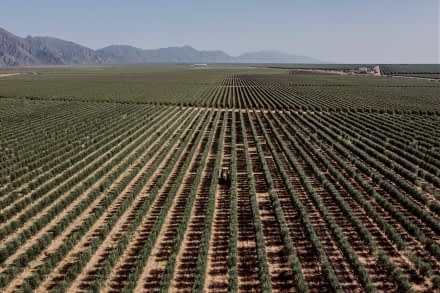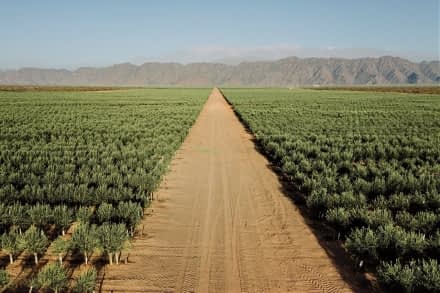The Argentine Republic is the largest producer of olive oil in the Southern Hemisphere, as its output ranges between 30 and 40 thousand tons of top-quality oil annually.
Less than a fifth of the total is used for domestic consumption, and the rest is exported to highly demanding markets. Currently, the olive oil agro-industry is among the activities with the highest growth potential in Argentina.

Argentina’s main advantage in terms of olive cultivation for the production of top-quality extra virgin oil is that there are large plantations of the appropriate varieties, with industrial establishments located right next to the plantations. This makes it possible to extract oil in the shortest possible time once the fruit is harvested from the tree, a crucial factor in the quality of the product obtained.
Therefore, there are integrated and controlled processes at every stage that guarantee a more efficient extraction to obtain top-quality, unique oil.
In addition, Argentina’s weather is suitable for olive cultivation, and the country features appropriate land areas, water and nutrients. These areas are characterized by a significant amount of sunlight for most of the year (e.g., the province of San Juan, in Cuyo). This is a key factor in order to increase the productivity of each plant since as many leaves as possible should receive a large quantity of sunlight in order to receive the greatest possible amount of solar radiation.
As for the production stage, there is a growing number of plantations in Argentina operating under new intensive or super-intensive agronomic models, cultivation systems for optimized crop performance, mechanization systems to reduce the need for labour, and water- and nutrient-efficient systems. This solves many of the issues that farmers had to face in traditional farming and results in more efficient and sustainable crops.
These newly adopted systems enable workers to take on more specialized tasks through continuous training in the use of new technologies. Some of the features of this system include more plants per hectare as compared to a traditional olive grove (1,400 to 2,100 plants per hectare), and fully mechanized harvesting and pruning.
This brings certain advantages, such as greater productivity per unit of land, and also results in a reduction in farming chores, early entry of crops into the production stage, and the production of top-quality oil.
Lastly, another significant advantage of Argentine olive oil is that, as it comes from the Southern Hemisphere, we can always offer freshly produced oil counter-seasonally to supply the markets and meet the needs of the Northern Hemisphere.
The North American market is thus a priority, based on their needs for extra virgin oil, the quality of which is becoming increasingly renowned around the world.
This sponsored article was written by the Argentine Consulate in New York with the contribution of José Chediack. For more information, please contact the consulate.
The news and editorial staff of Olive Oil Times had no role in this article’s creation.

 Nov. 18, 2021
Nov. 18, 2021 Argentine Consulate
Argentine Consulate




